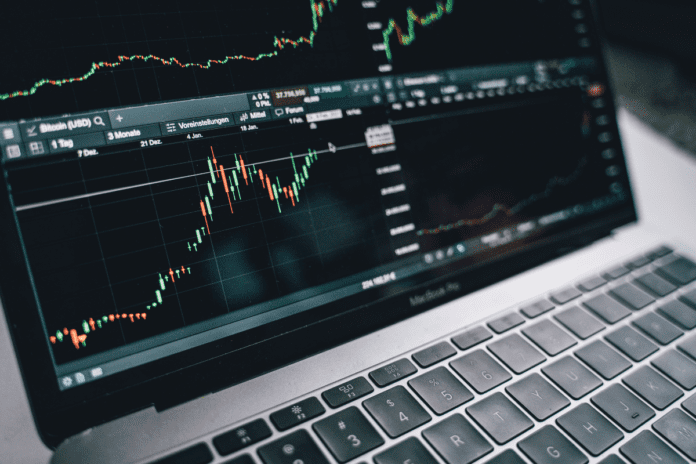“Is bigger always better?” might pop up when pondering borrowed funds for trading. Some see leverage as a gateway to multiplied gains, while others sense a quick route to disappointment. There’s undeniable excitement in controlling larger positions, yet missteps can sting. Market enthusiasts often view it as a secret weapon. But is it a treasure or a trap? The search for that answer sparks both hope and caution. Using leverage requires deep understanding, and investors linking up with educational firms through https://the-quantum-ai.org/ can explore different perspectives to make informed choices.
Introduction: Unraveling The Concept Of Trading Leverage
Defining Leverage In The Modern Marketplace
Leverage is a dynamic tool in modern finance. It permits traders to borrow funds and control positions larger than personal capital. Many consider it appealing because it magnifies results. Gains can balloon, but losses can follow the same path. Research from 2020 indicates a surge of about 35% in margin-based activity within certain equity markets. Some interpret these numbers as evidence of widespread curiosity about bigger profit opportunities.
Why Leverage Continues To Captivate Traders?
Ever heard the saying, “Don’t wager your shirt unless you’re okay losing it?” It fits leveraged trading well. A sense of excitement accompanies markets where modest amounts control major trades.
Sometimes it feels like stepping onto a roller coaster. One instant offers euphoria, and another can bring alarm. Folks often claim human ambition for higher returns is difficult to quell. Imagine an investor focusing on a slight currency movement. Without leverage, gains might be small. With borrowed margin, those same points can deliver a more substantial return.
Enthusiasm for borrowing to trade is everywhere, yet careful planning remains vital. Future segments reveal important mechanics and possible approaches for using margin responsibly.
Laying The Foundation: The Mechanics Of Leveraged Trading
Key Terminologies And Core Principles
Margin, pips, and margin calls are a few terms often heard in leveraged environments. Borrowed funds form the backbone of each trade, with margin serving as a security deposit. For instance, a trader holding 1,000 dollars might control a 10,000-dollar position if the leverage ratio is 1:10. A slight movement in asset price can generate large outcomes, either good or bad. Some folks liken leveraged trading to driving a car at high speed: it offers a thrill, but caution is wise.
How Brokers Facilitate Leverage?
Brokers play a significant role here. They extend credit based on regulations and client agreements. A margin call happens when equity dips below a required threshold, prompting the broker to close open trades to safeguard borrowed capital. Different markets have their own margin rules. Forex brokers often offer ratios like 1:50 or 1:100, while stock platforms might limit leverage to smaller amounts.
Common Financial Instruments And Markets Using Leverage
Instruments vary in accessibility. Currencies, commodities, and certain crypto assets provide leveraged options. A trader might choose a Contract for Difference on gold or a future on crude oil. Each instrument has specific margin requirements, so thorough research is suggested. Some observers advise testing strategies on a demo account before committing real money.
Strategic Advantages: Why Traders Embrace Leverage?
Amplifying Profit Potential
Many individuals chase leveraged opportunities to amplify outcomes. A small account can produce sizable returns if a trade moves in the right direction. Some recall the Bitcoin surge of 2017, where a fraction of borrowed funds yielded impressive gains for risk-takers. Yet every rose has its thorn.
Elevated profit potential is offset by a heightened chance of losses. A friend once recounted placing a leveraged bet on a tech stock, only to see it plummet after negative earnings news. The experience prompted a thoughtful review of future strategies.
Capital Efficiency And Diversification
Capital efficiency is another draw. Borrowing enhances buying power, allowing multiple positions with limited starting capital. Diversification becomes more feasible because funds can spread across currencies, stocks, or metals. Those who tread carefully find ways to reduce overall risk while still reaching for healthy returns. A handful of seasoned players treat leverage as a strategic partner, not a magic wand.
Gaining Access To Otherwise Prohibitive Markets
Access to high-priced assets rounds out the benefits. Certain markets might seem unreachable without help from margin. For example, a commodity such as gold can be expensive. With leverage, an investor can participate in price changes without committing a large sum.
Ever tried to buy a fancy sports car just for a test drive? Margin sometimes feels like renting the dream ride, but skipping the full sticker price.
The Hidden Pitfalls: Recognizing Leverage-Induced Risks
Accelerated Losses And Margin Calls
Swift gains often steal the spotlight, yet leveraged trading carries considerable downsides. A wrong call can spark a rapid cascade of losses. Margin calls arise when equity dips beneath a required level, pushing brokers to liquidate positions.
Such events feel unsettling for newcomers, particularly those who gamble with funds they cannot afford to lose. The emotional impact can be large. Some traders mention sleepless nights and constant chart-watching, hoping for a sudden reversal.
Emotional Toll And Overtrading
Overtrading is another trap. Access to multiple positions with borrowed capital tempts individuals to chase every tick. Reckless habits might harm mental well-being and drain accounts faster than expected. Friends occasionally joke about “repeated donkey rides,” referencing impulsive trades ending poorly. It helps to recall even seasoned players step back sometimes to maintain clarity.
Market Volatility And Liquidity Concerns
Market volatility and liquidity challenges add more drama. Picture a fast-moving currency pair or a lesser-known digital coin with thin trading volume. Sharp swings and rapid order-book shifts may trigger slippage, leading to unfavorable fills. A quick summary of main pitfalls:
Margin Calls Closing Positions Prematurely
- Emotional strain caused by swift price moves
- Overtrading spurred by a bigger bankroll than normal
Anyone investigating leverage might ponder these hazards. Speaking with a financial advisor or studying reliable analyses may avert heartbreak.
Conclusion: Is Leveraged Trading Worth The Risk?
Summation Of Key Points
There is an undeniable appeal in margin-based strategies, yet caution stands as a vital companion. Glowing success stories, like those of early crypto adopters, can overshadow the sobering reality of rapid losses. Some describe leverage as a double-edged sword: it offers multiplied gains or multiplied setbacks.
Personal anecdotes often highlight the emotional whirlwind behind leveraged trades. One colleague once shared a memory of watching profits soar one day and vanish the next, all due to a swift market pivot.
Balanced Perspective
Balancing risk and reward is key. Thorough reading, practice on demo platforms, and measured risk controls help nurture wiser decisions. Protective stops, manageable position sizes, and an awareness of market conditions create a more sustainable path. Curiosity is healthy, but blind optimism can pave a rocky road for those unprepared.
Final Advice
Every individual’s journey with borrowed capital is unique. Some relish the thrill, others prefer a more moderate approach. A second opinion from a licensed financial expert adds a layer of reassurance. Many people consult professionals before risking large sums. Are sizable leaps worth uneasy nights? Only personal goals and circumstances can provide clarity. Reflecting on strategies, researching new developments, and seeking guidance from trusted sources tends to forge a safer route.
Conclusion
So, is a leveraged approach a game-changer or a heart-stopper? Each person weighs the thrill against the potential troubles. Some experience impressive wins, and others endure swift losses. Preparedness, thoughtful strategy, and trusted professional advice can soften any pitfalls. Are giant leaps worth sleepless nights? That decision hinges on personal goals and comfort with risks. Every choice shapes a distinct journey through the ups and downs of leveraged trading.








